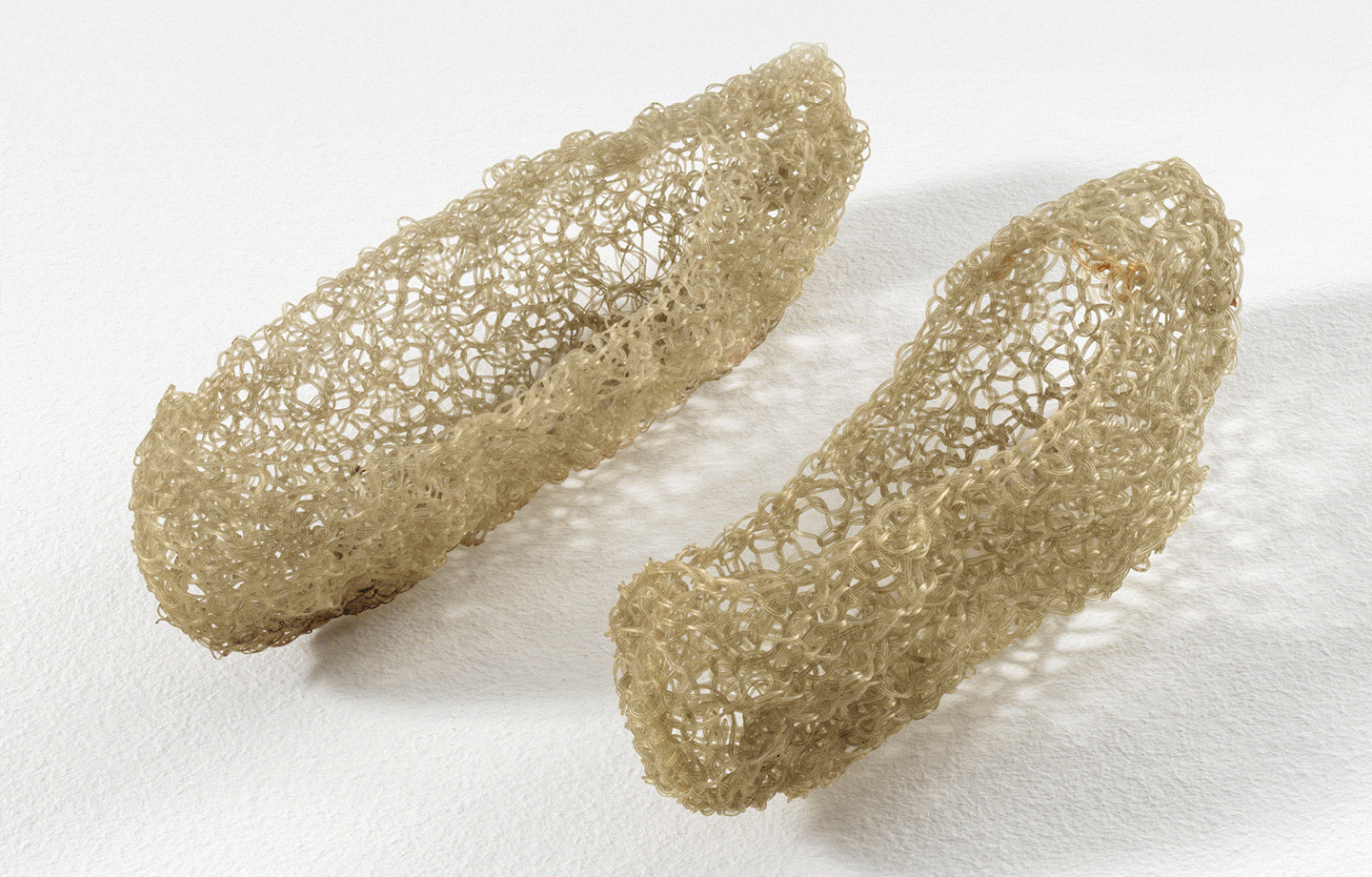with Hilti Art Foundation
Städtle 32
FL-9490 Vaduz
Liechtenstein
Hours: Tuesday–Sunday 10am–5pm,
Thursday 10am–8pm
T +423 235 0300
mail@kunstmuseum.li
Thanks to a generous donation from the Gerda Techow gemeinnützige Stiftung, Vaduz, Kunstmuseum Liechtenstein has acquired three important works for its collection. The gift was prompted by the twentieth anniversary of the museum, which opened in November 2000. This is the most generous private donation since the museum’s foundation.
Thanks to the specific and distinct profile of its collection, Kunstmuseum Liechtenstein has succeeded in establishing itself internationally in the past two decades. The collection of Italian Arte Povera in particular has received great international recognition. The acquisition of two historically important works by Marisa Merz and Luciano Fabro has further strengthened this section of the collection.
Marisa Merz (1926–2019), Scarpette, 1968, is among the most important early works by one of the few female Arte Povera artists. The extremely delicate “little shoes,” woven from nylon thread, were made in connection with her early actions themed around housework and a fleeting, wistful vision of immersing oneself in nature. Of the few versions that were made and have survived, this is the first pair to be added to a public collection.
Luciano Fabro (1936–2007), Felce, 1968, is one of the artist’s central works from the early days of Arte Povera. A large fern leaf is held under crystal glass by a sheet of lead that is also wrapped around the edges of the glass sheet. The glass and lead roughly echo the fern’s form. This sculpture, frequently reproduced but rarely exhibited, is part of a theme in Fabro’s oeuvre in which he explored long periods of time. The combination of materials (fern, glass and lead) alludes to both the organic and inorganic, testifying to past periods in the history of the earth embedded in the planet’s crust.
These acquisitions were made possible by the Gerda Techow Stiftung; Kunstmuseum Liechtenstein now holds major works by all exponents of Arte Povera from the movement’s “historical” phase, between 1965 and 1971. The Kunstmuseum is particularly pleased that these acquisitions came directly from the artists’ estates and thus with excellent provenance.
Thanks to the generous donation, it was also possible to acquire a large and renowned early work by Steven Parrino (1958–2005), Crowbar, 1987. Here, we see Parrino’s artistic interests come together in a unique way: “painting after the death of painting” and an exploration of central painterly positions from the first and second phases of modernism, in this case those of Kasimir Malevich and Lucio Fontana. The artwork consists of a monumental black monochrome painting; in an action documented on video, the artist used a crowbar to rip out a slightly smaller rectangle on three sides, allowing the “free” canvas to hang to the ground, thereby revealing the structure of the stretcher and the wall behind. The work previously featured in the major retrospective devoted to Parrino and organised by Kunstmuseum Liechtenstein in 2020; it adds a further central work to the Parrino paintings already in the museum’s collection.
Gerda Techow (1904–2001), born in Hamburg, lived in Liechtenstein after 1956 and was a constant patron of the arts. The Gerda Techow gemeinnützige Stiftung, founded in Vaduz following her death, has upheld this commitment ever since, already gifting Gerda Techow’s art collection to Kunstmuseum Liechtenstein in 2015, including paintings by Alfred Sisley, Ernst Ludwig Kirchner and Alexej Jawlensky along with watercolours by Kirchner and Emil Nolde.
With the current donation, the Foundation once again pays tribute to the clear profile and high quality of the Kunstmuseum’s work since its inauguration in 2000, its international success and its consistent educational work.



